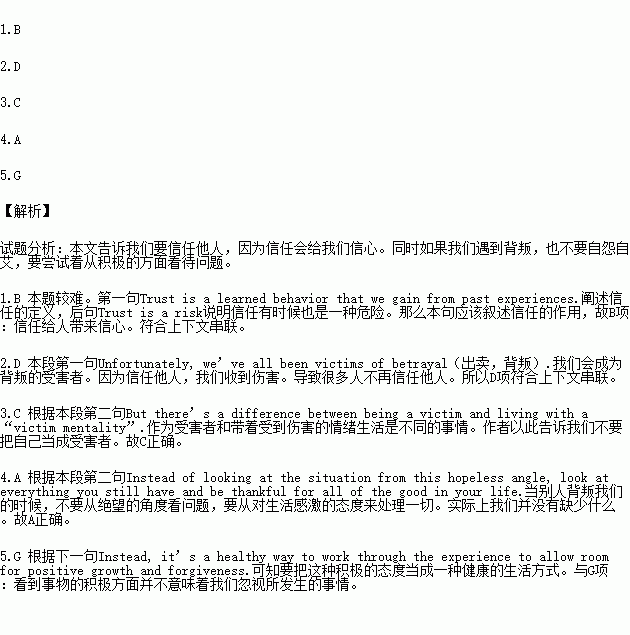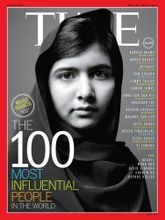题目内容
根据短文内容,从短文后的选项中选出能填入空白处的最佳选项。选项中有两项为多余选项。
Building Trust in a Relationship Again
Trust is a learned behavior that we gain from past experiences. 1. Trust is a risk. But you can’t be successful when there’s a lack of trust in a relationship that results from an action where the wrongdoer takes no responsibility to fix the mistake.
Unfortunately, we’ve all been victims of betrayal(出卖,背叛). Whether we’ve been stolen from, lied to, misled, or cheated on, there are different levels of losing trust. 2. They’ve been too badly hurt and they can’t bear to let it happen again. It’s understandable, but if you’re willing to build trust in a relationship again, we have some steps you can take to get you there.
●Learn to really trust yourself. Having confidence in yourself will help you make better choices because you can see what the best outcome would be for your well-being.
● 3. If you’ve been betrayed, you are the victim of your circumstance. But there’s a difference between being a victim and living with a “victim mentality”. At some point in all of our lives, we’ll have our trust tested or violated.
● 4. Once trust is lost, what is left? Instead of looking at the situation from this hopeless angle, look at everything you still have and be thankful for all of the good in your life. 5. Instead, it’s a healthy way to work through the experience to allow room for positive growth and forgiveness.
A. You didn’t lose “everything”
B. It is putting confidence in someone.
C. Stop regarding yourself as the victim.
D. Sometimes people simply can’t trust any more.
E. Remember that you can expect the best in return.
F. This knowledge carries over in their attitude toward their future relationships.
G. Seeing the positive side of things doesn’t mean you’re ignoring what happened


 ucation; they want their children to receive higher education and not to fall behind urban children any longer. What’s more, we hope to have better medical treatment and live a healthier life in the future.
ucation; they want their children to receive higher education and not to fall behind urban children any longer. What’s more, we hope to have better medical treatment and live a healthier life in the future.